Forums
- Forums
- Axis And Allies Forum
- General Discussion
- Aviation News
Aviation News
Post a reply
- Go to Previous topic
- Go to Next topic
- Go to Welcome
- Go to Introduce Yourself
- Go to General Discussion
- Go to Screenshots, Images and Videos
- Go to Off topic
- Go to Works in Progress
- Go to Skinning Tips / Tutorials
- Go to Skin Requests
- Go to IJAAF Library
- Go to Luftwaffe Library
- Go to RAF Library
- Go to USAAF / USN Library
- Go to Misc Library
- Go to The Ops Room
- Go to Made in Germany
- Go to Campaigns and Missions
- Go to Works in Progress
- Go to Juri's Air-Raid Shelter
- Go to Campaigns and Missions
- Go to Works in Progress
- Go to Skinpacks
- Go to External Projects Discussion
- Go to Books & Resources
-
 Main AdminAn F-35B Lightning II sits on the flightline at RAF Fairford, United Kingdom, June 30, 2016. This marked the first time the U.S. Air Force's newest, multi-role, 5th generation fighter touched down on UK soil. (U.S. Air Force photo by Tech. Sgt. Jarad A. Denton/Released)
Main AdminAn F-35B Lightning II sits on the flightline at RAF Fairford, United Kingdom, June 30, 2016. This marked the first time the U.S. Air Force's newest, multi-role, 5th generation fighter touched down on UK soil. (U.S. Air Force photo by Tech. Sgt. Jarad A. Denton/Released)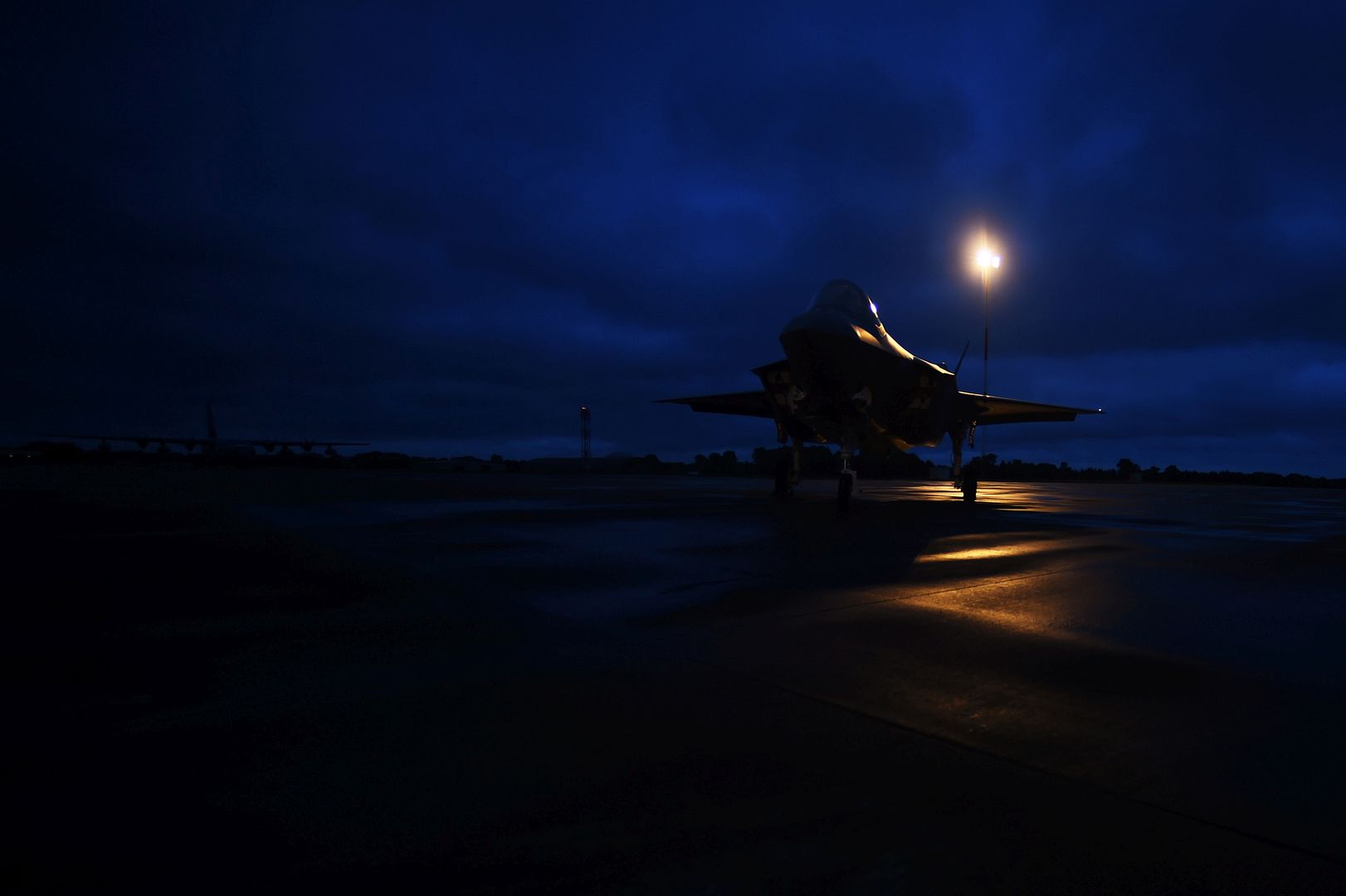
An AV-8B Harrier and an F-35B Lightning II Joint Strike Fighter conduct a flyover during a re-designation and change of command ceremony aboard Marine Corps Air Station Yuma, Ariz., June 30. During the ceremony, Marine Attack Squadron (VMA) 211 transitioned to Marine Fighter Attack Squadron (VMFA) 211 making it the first Harrier squadron to become an F-35 squadron. (U.S. Marine Corps photo by Lance Cpl. Harley Robinson/Released.)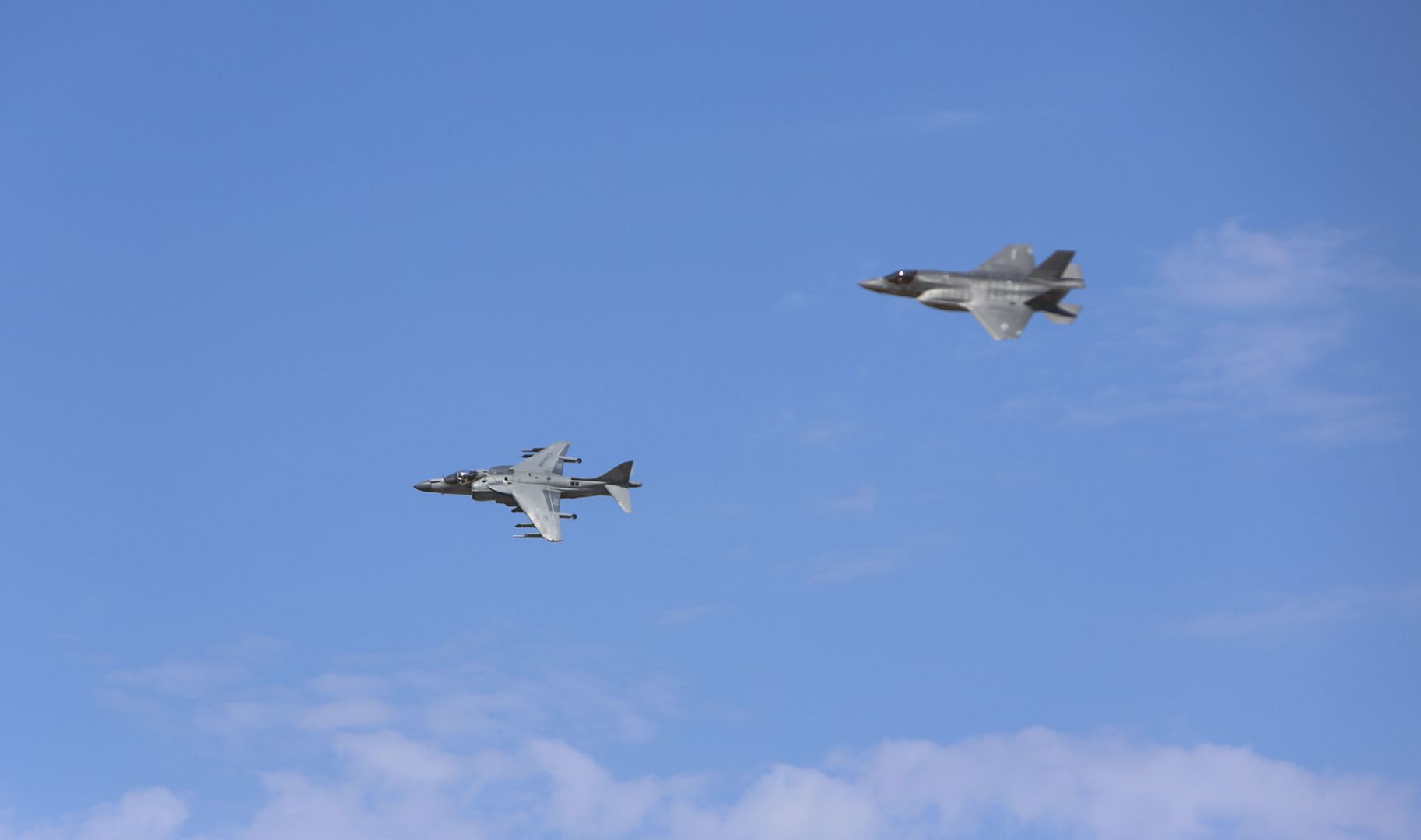
30 June 2016 Press Release
Lhasa based Tibet Airlines has received its first widebody aircraft, an A330-200 with increased 242 tonne maximum take-off-weight (MTOW), following a handover in Toulouse, France. The increased MTOW, the first A330-200 in China, allows airlines to operate from the most demanding high altitude airports where take off performance, additional range and improved operating costs are key.
The aircraft is configured in a three-class cabin layout (12 business, 32 premium economy, 235 economy) and deployed to open up new international routes.
Bai Weisan, President of Tibet Airlines said: ?We are extremely excited to receive our first widebody airliner ? an enhanced A330 from Airbus and are very confident at its high-altitude performance. The A330 Family will become our core widebody to be deployed on our new international routes thanks to its flexibility, comfort and efficiency. With the A330, we are looking forward more passengers from all over the world to flying with Tibet Airlines and visiting Tibet.?
Eric Chen, President of Airbus China said: ?We congratulate Tibet Airlines on receiving its first A330 and we express our gratitude for the confidence demonstrated in our leading A330. With an operating base at high altitude Lhasa Airport and routes covering all of Tibet?s civil airports, the airline already benefits from the unrivalled performance of Airbus single-aisle aircraft. We are proud the A330 is Tibet Airline?s backbone for international route expansion.?
Tibet Airlines currently operates an all-Airbus fleet comprising of 14 A319s and 2 A320s. The airline is famous for its high-altitude operations with its operating base at Lhasa Airport which is at over 3,500 metres altitude. With the proven performance of Airbus narrow body, especially the A319 in high-altitude airports, Tibet Airlines has been successfully connecting Tibet with more domestic cities like Beijing and Shanghai. The A330 is the first widebody equipped with the Required Navigation Performance with Authorisation Required (RNP-AR) and the only widebody airliner today flying over Tibet?s sky. It will exceed the airlines? expectation on high-altitude performance also offer unrivalled efficiency, also greater comfort to the passengers.
An upgrade to the UK Royal Air Force (RAF)?s synthetic simulator software has been successfully completed by the Air Service team at our site in Warton, Lancashire.
Engineers in the Company?s Aircrew Training & Synthetic Services team delivered an Urgent Operational Requirement to the Typhoon Simulators? Emulated Deployable Cockpit Trainers (EDCT) at RAF Coningsby and RAF Lossiemouth.
The software upgrades provide pilots with the ability to simulate sorties over current operational areas, helping them to become familiar with the geographical area, conditions and layout before deployment.
Minister for Defence Procurement Philip Dunne MP said:
?Simulators provide vital training for our pilots ahead of their deployment on operations and making that training as relevant to our air crew as possible gives them an edge over their adversaries.
?That?s why these new software updates at RAF Coningsby and RAF Lossiemouth, which allow pilots to recreate environments in Iraq and Syria, are so important; they help our people undertake the best possible preparations for the fight against Daesh and keeping the UK safe.?
Mark Williams, of BAE Systems? Aircrew Training & Synthetic Service, added:
?This update to the UK?s synthetic training devices forms an integral part of our ongoing commitment to support the UK training programme and RAF operational requirements.
?We are delighted with the positive response it has received, which demonstrates not only the strength of the relationship between BAE Systems and our customer, but the expertise of our people in adapting quickly to changing requirements and delivering urgent operational support.?
The capability, along with a de-brief facility recently delivered to the RAF, was presented to the Typhoon Force Commander, Air Commodore Ian Duguid, during a visit to the Typhoon Training Facility at Lossiemouth.
-
9 years ago
 Level 1Swiss receives first Bombardier C Series aircraft
Level 1Swiss receives first Bombardier C Series aircraft
Bombardier has delivered the first C Series aircraft to launch operator Swiss International Air Lines (Swiss). Designed to serve the 100-150 seat aircraft segment, the newly delivered CS100 jet is scheduled to enter service on 15 July. Over the time, Swiss will replace its Avro RJ100 fleet with the C Series aircraft.
Swiss International Air Lines CEO Thomas Kl?hr said: "Along with the CS300 aircraft that we've also ordered, the C Series fleet will allow us to perfectly tailor our capacity to demand on various European routes, while providing an excellent travel experience for our passengers."
The new CS100 aircraft will fly to various routes, including Manchester, Prague and Budapest. Swiss recently converted ten of its previously ordered 30 CS100 aircraft to the larger CS300 aircraft. The airline seeks to use the additional C Series aircraft to replace its other existing aircraft and enable future growth.
Bombardier Commercial Aircraft president Fred Cromer said: "Today is a significant moment for Bombardier, Swiss and their employees, many of whom have dedicated years to designing, building, marketing and defining the flight network for the C Series aircraft as the first right-sized aircraft in the 100-150 seat market segment in nearly 30 years." Equipped with Pratt & Whitney PurePower PW1500G engine, the C Series family of aircraft provdes operators up to $13m extra value for each aircraft. -
 Main AdminA modified MC-130J waits for its next mission as another C-130 lifts off above it at Eglin Air Force Base, Fla. The test aircraft has been fitted with vertical fins on each wing, called winglets. The 413th Flight Test Squadron aircrew and engineers tested the modified aircraft over eight flights. The goal of the tests was to collect data on possible fuel efficiency improvements and performance with the winglets and lift distribution control system installed. (U.S. Air Force photo/Samuel King Jr.)
Main AdminA modified MC-130J waits for its next mission as another C-130 lifts off above it at Eglin Air Force Base, Fla. The test aircraft has been fitted with vertical fins on each wing, called winglets. The 413th Flight Test Squadron aircrew and engineers tested the modified aircraft over eight flights. The goal of the tests was to collect data on possible fuel efficiency improvements and performance with the winglets and lift distribution control system installed. (U.S. Air Force photo/Samuel King Jr.)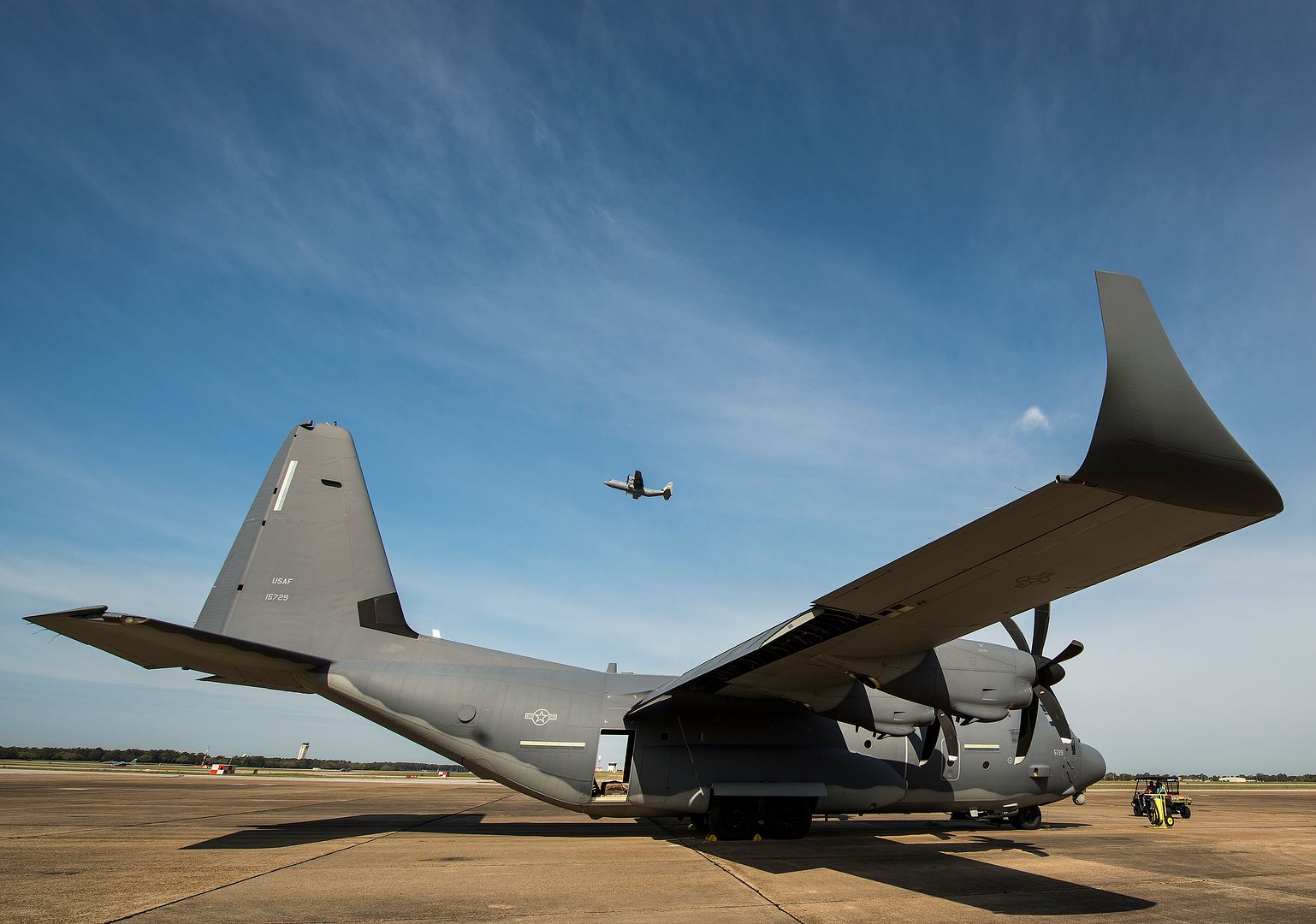
-
9 years ago
 Level 1China refuels satellite in orbit
Level 1China refuels satellite in orbit
China has become one of the few countries to successfully refuel satellites in space. Launched aboard the Long March-7 carrier on Saturday, the country's Tianyuan-1 system has been able to refuel one of the satellites in orbit.
China's first in-space satellite refuelling system, Tianyuan-1 has been developed by National University of Defense Technology, reported Xinhuanet.com.
Although officials have not detailed the process, they said that it is not different from refuelling airplanes mid-air, reported Ubergizmo. Refuelling enables satellites to remain in orbit for longer period of time; otherwise, making other adjustments would be expensive and impractical.
By refuelling satellites, countries can save substantial amount of money as they can reduce the number of vehicles required to deploy to maintain the presence of their satellites in space. The process will also decrease the growing number of dead satellites and debris in the orbit. The final aim is to completely avoid fuel, but attempts such as these indicate an important development in the aerospace industry.
-
 Main AdminLightning Strikes In The Skies Above Marham
Main AdminLightning Strikes In The Skies Above Marham
The new F-35B Lightning Aircraft made its first appearance above RAF Marham, its future home base, at the end of last week. Local dignitaries joined personnel from the base to see this historic sight as the Centenary Tornado Jet joined the Lightning for the flypast.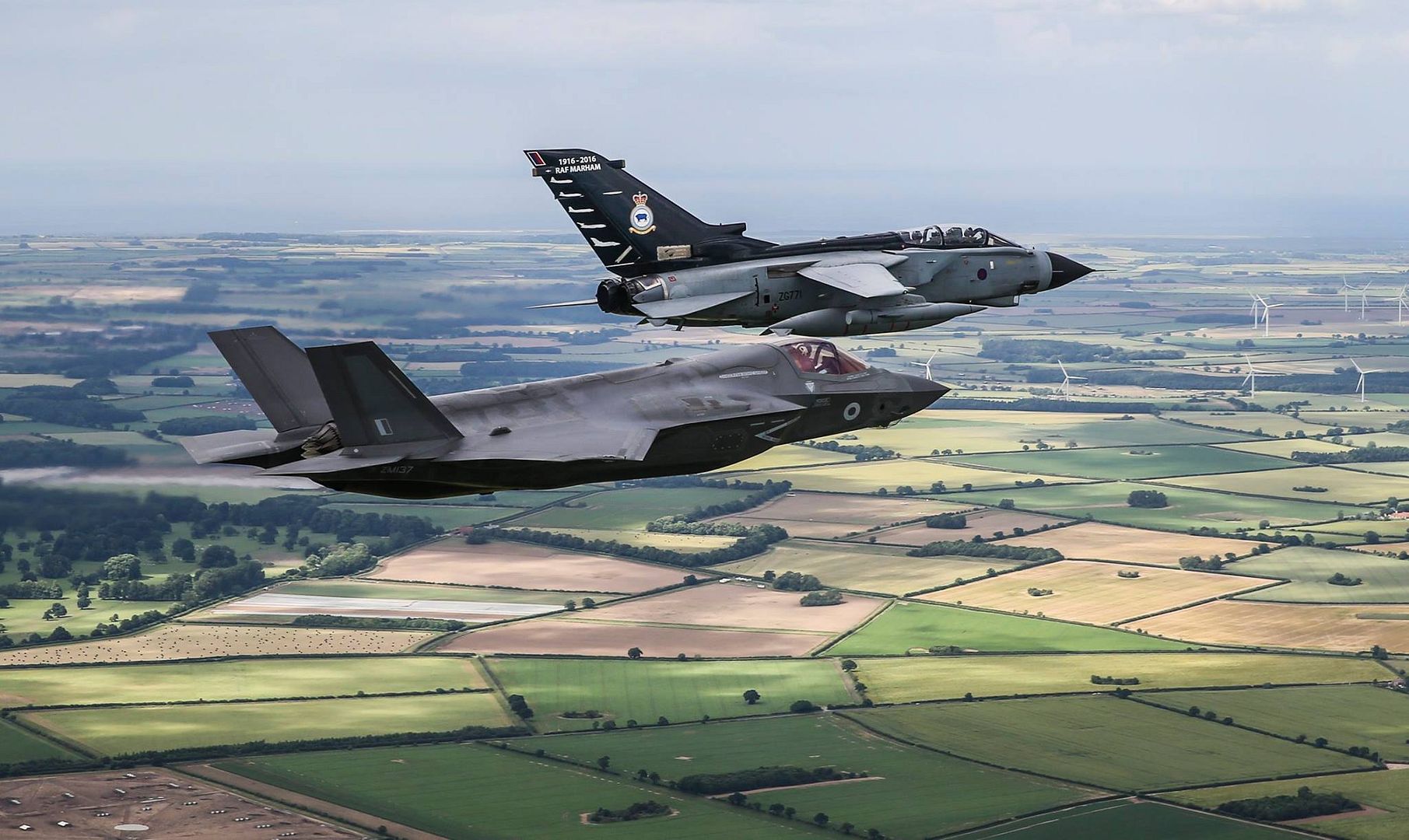

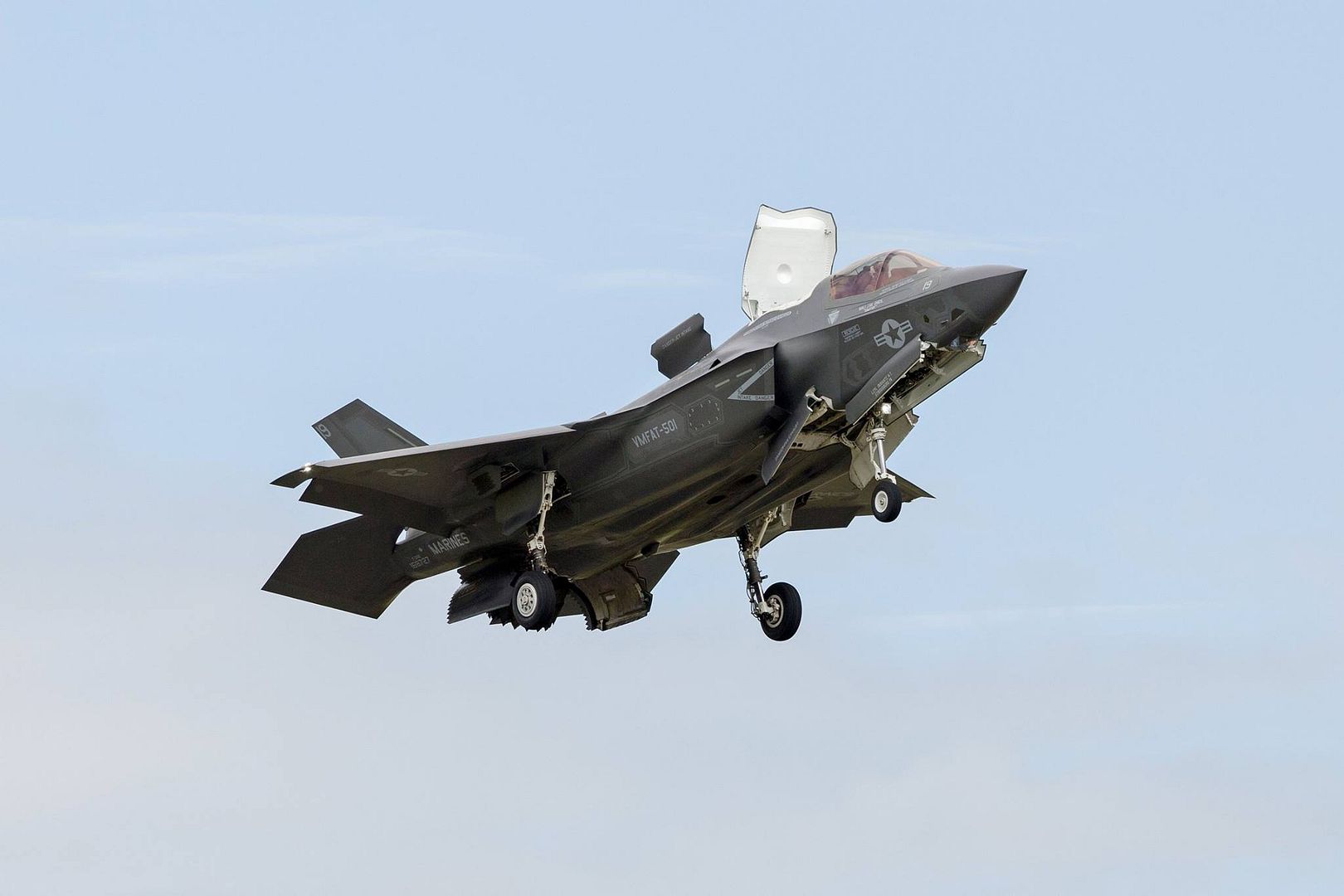
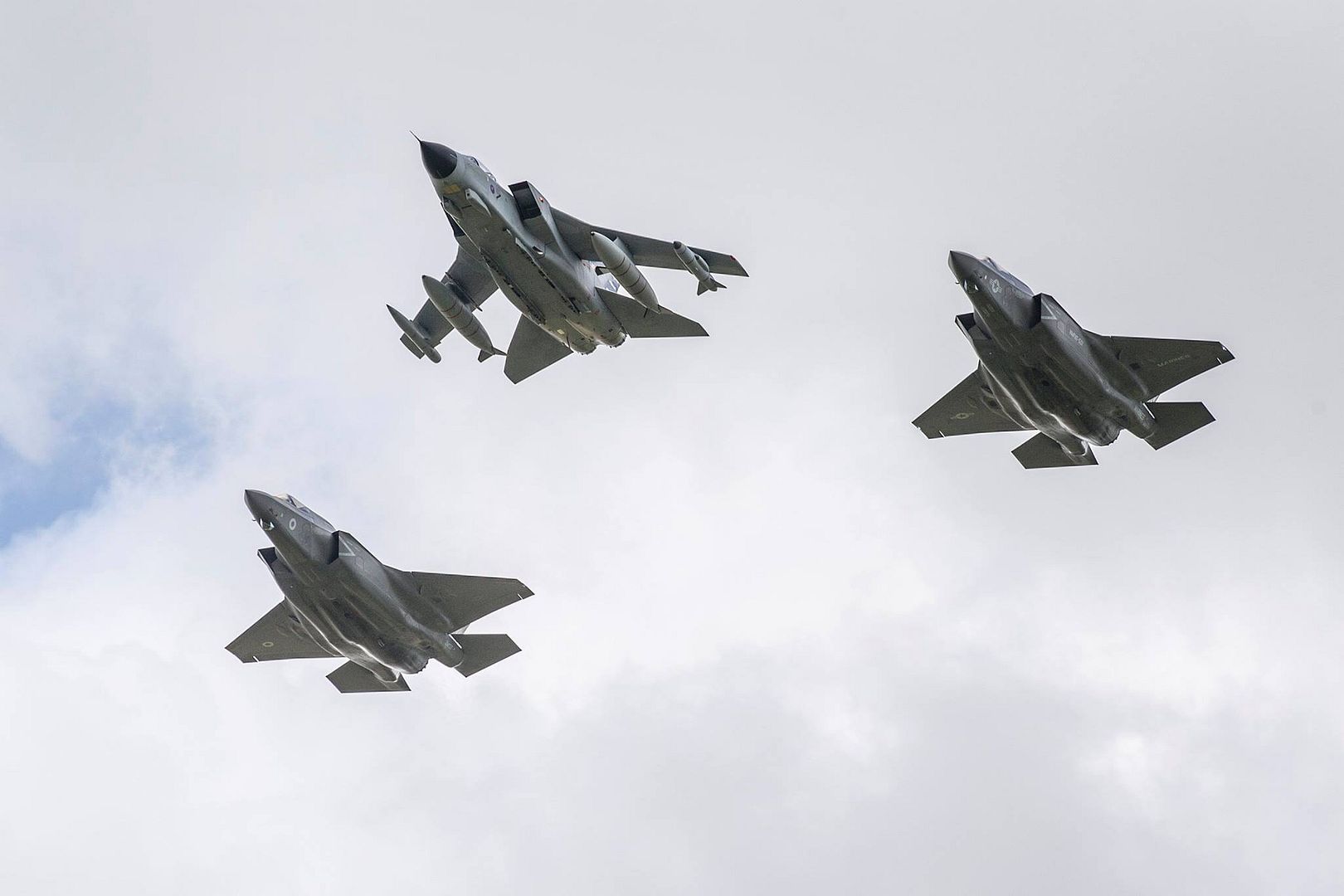
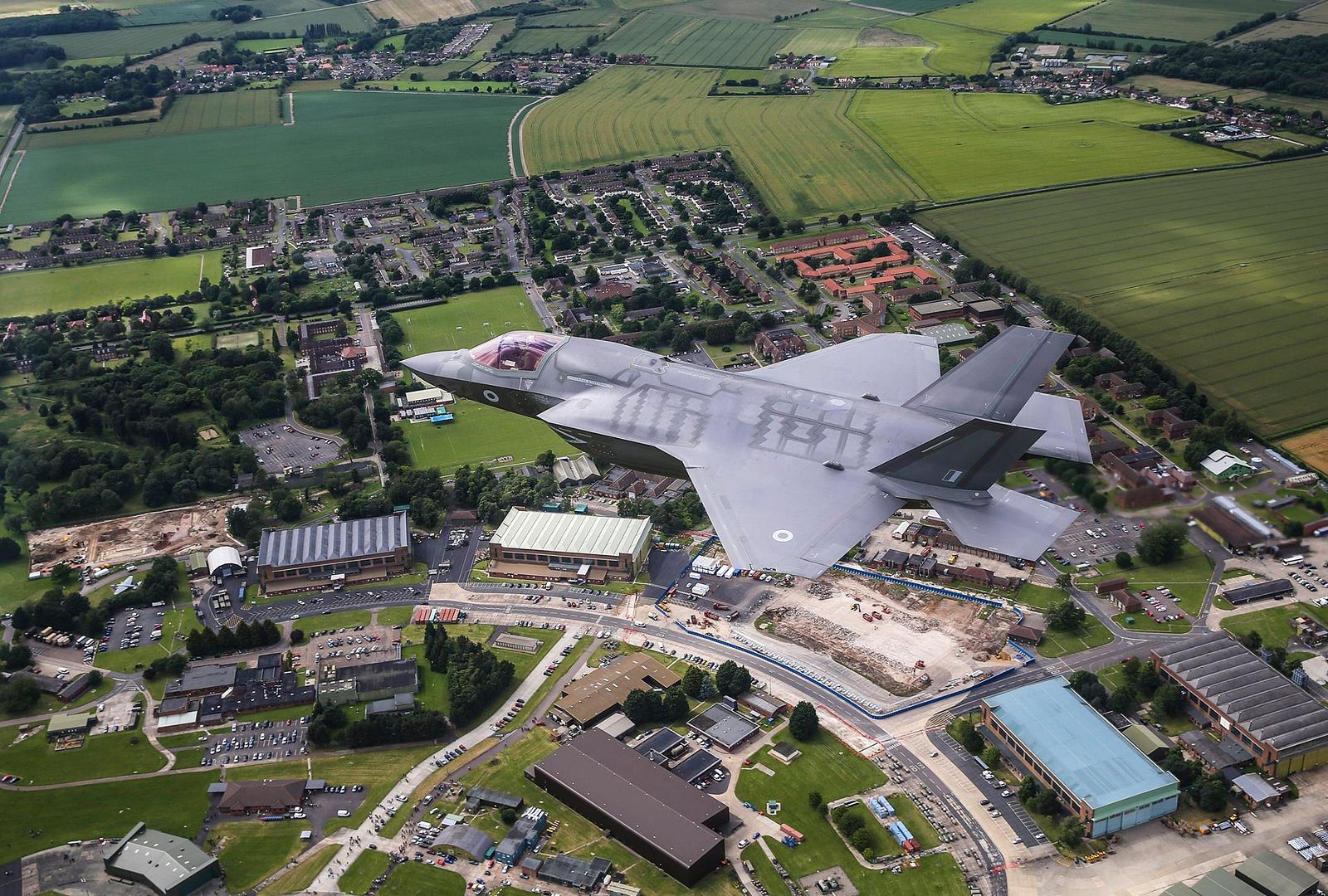
-
9 years agoTue Jul 05 2016, 09:55am
 Main AdminNELLIS AIR FORCE BASE, Nev.- The United States Air Force is well known as the pinnacle of air superiority. Guaranteeing this supremacy are the Airmen who wear the coveted patch of the U.S. Air Force Weapons School. With only approximately 100 weapons officers and enlisted specialists graduating from the school every six months, these Airmen are truly topnotch in their fields.
Main AdminNELLIS AIR FORCE BASE, Nev.- The United States Air Force is well known as the pinnacle of air superiority. Guaranteeing this supremacy are the Airmen who wear the coveted patch of the U.S. Air Force Weapons School. With only approximately 100 weapons officers and enlisted specialists graduating from the school every six months, these Airmen are truly topnotch in their fields.
At the conclusion of nearly 400 hours of graduate-level academics and combat training missions, the Weapons School curriculum climaxes with a week-long series of exercises known as Advanced Integration.
Composed of six different missions, Advanced Integration contains one of the most dynamic pertaining to fourth and fifth Generation airframes, a night exercise known as Deliberate Strike Night.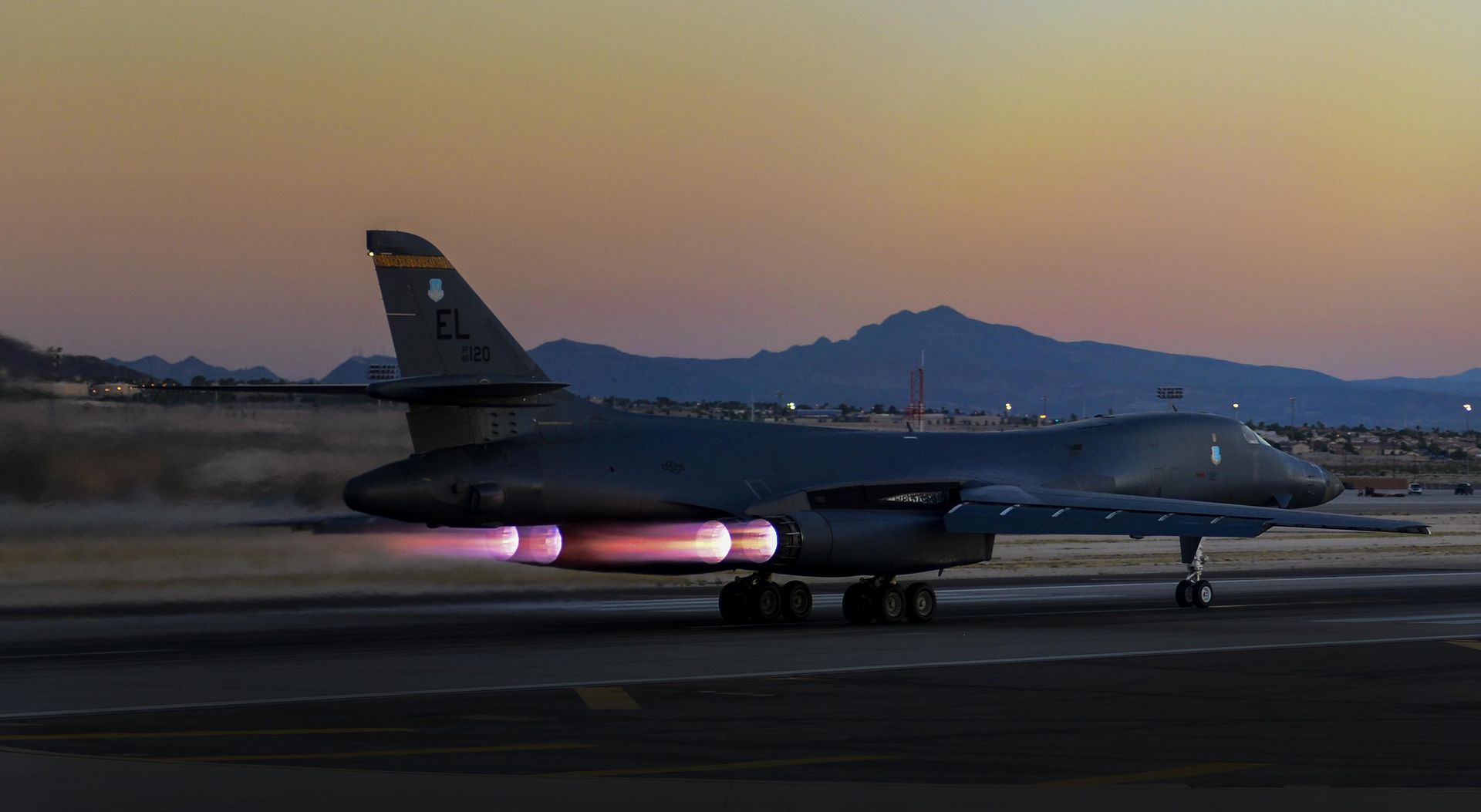
?DSN is a Large Force Exercise in the Weapons School Advanced Integration Phase involving in excess of 70 aircraft and Joint Department of Defense assets (from three services) against a realistic near peer adversary,? said Lt. Col. Daniel S. Hoadley, 325th Weapons Squadron commander. ?It?s a graduation level exercise for USAFWS students. It is the U. S. Air Force?s premier training event focused on attacking an Integrated Air Defense System.?
DSN reflects the degree of cutting-edge training provided by the Advanced Integration portion of the Weapons School curriculum by testing stealth and conventional airframes? abilities to conduct attacks during the hours after sunset.
?It is one of six Advanced Integration vulnerability periods,? said Hoadley. ?The focus of this vulnerability period is integration of fifth Generation Stealth assets with fourth Generation Conventional assets to attack an advanced air defense system, making it safe for follow-on assets to conduct strikes on later nights of the war.?
Since the purpose of DSN is to show the full-spectrum capabilities of the approximately 60 Air Force and U.S. Navy assets participating in the exercise, planning such an intricate exercise is no simple task.
?DSN planning begins with an initial planning conference three months prior to the event and continues until mission execution, which takes four days from the beginning of student planning to the end of the debrief,? said Maj. Jonathan Roe, 325th Weapons Squadron assistant director of operations. ?I?m the vulnerability period manager for DSN. I oversee all exercise coordination and ensure that all the desired learning objectives (DLOs) for every participating squadron are built into the execution plan. It's a huge responsibility.?
While Roe oversees the planning of DSN, its implementation requires cooperation of a multitude of specialized offices for the event to unfold smoothly and successfully.
?The Commandant's Office of Integration assists in the coordination,? said Hoadley. ?Major Jonathan "Death" Roe of the 325th WPS is the vulnerability periods manager for DSN. Roe won Air Combat Command Instructor Pilot of the Year, mostly for his instructional ability and his expertise in managing this high-visibility mission.?
In designing DSN, one vital factor of DSN to take into account is the exercise?s stealth execution during hours of darkness.
?On the early nights of an air campaign, the situation that we're simulating, the US gains a significant advantage over our adversaries by striking at night,? said Hoadley. ?It boosts the survivability of all USAF assets and increases our probability of achieving surprise. For stealth assets, specifically, we prefer to employ at night because it reduces our visual signature.?
Since the focus of DSN is on fifth Generation Stealth assets with fourth Generation Conventional assets, one of the main night players is the B-2 Spirit.
?The B-2 fulfills the role of long range penetrating strategic attack,? said Hoadley. ?Our main role is integrated air defense systems defeat. Stealth allows us to get inside of threat envelopes that conventional assets cannot penetrate. We're able to employ weapons that degrade that threat and make it safe for follow on forces to conduct operations at an acceptable level of risk.?
With the B-2 at the forefront of the exercise, the stealth bomber pilots also serve a critical role in the execution of DSN.
?In addition to the integration opportunity that all of the other participants are benefiting from, the B-2 USAFWS students are charged with leading the mission planning cell,? said Hoadley. ?A select B-2 weapons instructor course student will be responsible for putting the entire plan for the vulnerability period together. He must understand the critical capabilities that everyone brings to this fight and put them together to solve the problem we hand to them.?
While the B-2 and its pilots play a central role in the execution of DSN, the night wouldn?t be possible without the integration of the nearly 60 other airframes participating.
?Each participant brings an important piece of the overall puzzle that makes this plan come together,? said Hoadley. ?Some assets protect strikers from hostile fighters, some assist in finding un-located threats, and others provide suppression of the ground threat to enable strike aircraft to drop bombs. At the end of the day it's a team effort.?
These airframes working together serve to accomplish DSN focus of Air Force low-observable and conventional platforms deliberately targeting an adversary?s simulated integrated air defense system in an Anti-Access, Area Denial scenario.
This focus makes DSN a distinctive part of Advanced Integration and the unique training of the select Airmen who earn the coveted Weapons School patch and who ensure the air superiority of the United States Air Force.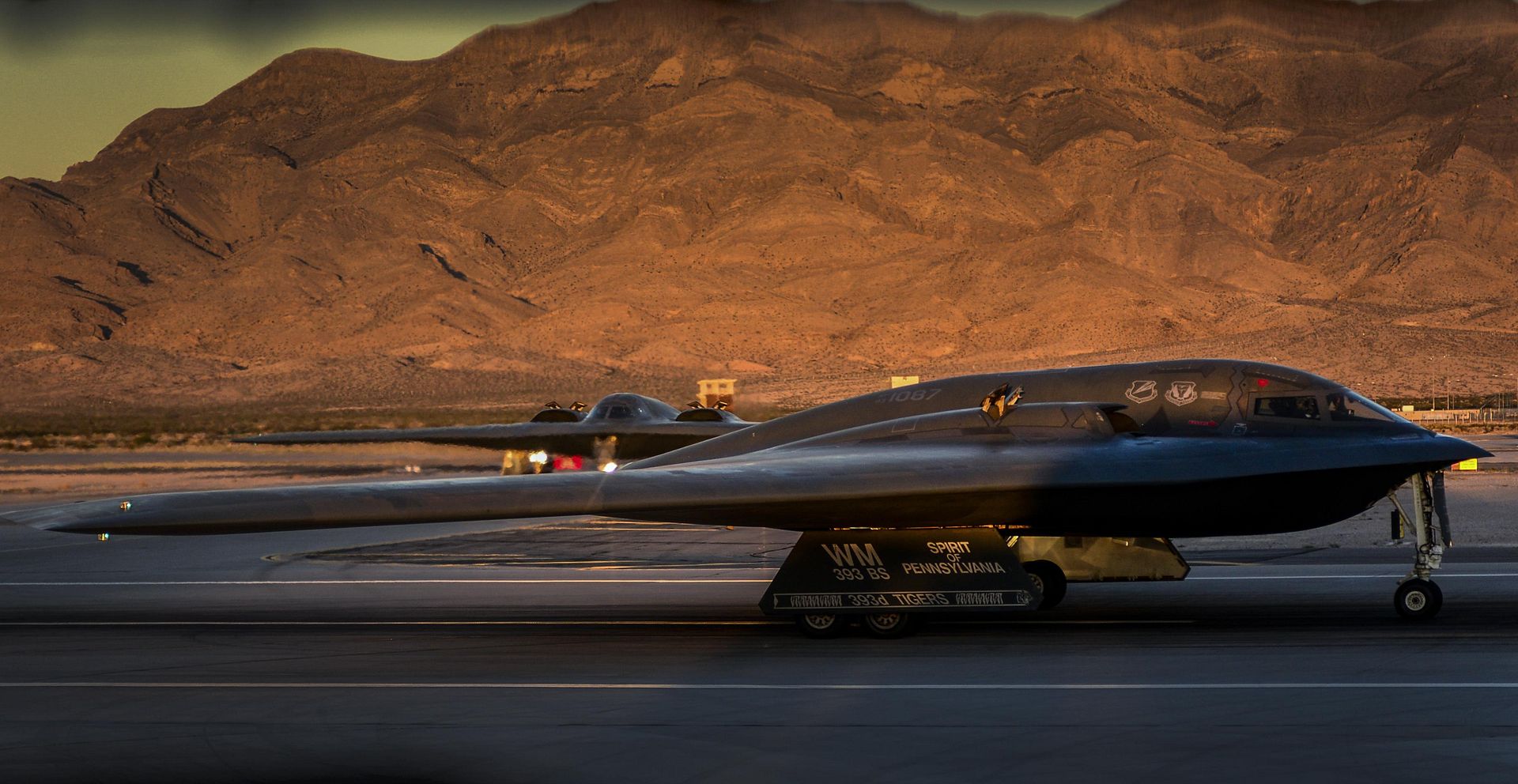 .
.
ATLANTIC OCEAN (NNS) -- A technology innovation that makes landing fixed-wing aircraft aboard an aircraft carrier was tested by the Strike Air Test and Evaluation Squadron (VX-23) aboard the aircraft carrier USS George Washington (CVN 73) June 23-28.
The Maritime Augmented Guidance with Integrated Controls for Carrier Approach and Recovery Precision Enabling Technologies, or Magic Carpet, is advanced technology designed to streamline the aircraft carrier landing process, which provides improved safety, efficiency and success rates in recovering fixed-wing aircraft on board aircraft carriers.
"We are testing the initial fleet release version," said Lt. Christopher Montague, a project officer for Magic Carpet attached to VX-23. "It makes the job (of landing on a carrier) a lot easier. We have taken a number of leaps in what we can do with flight control technology to be more accurate and use fewer passes to successfully trap an aircraft."
On typical carrier landings, pilots must align glide slope, angle of attack and line up, often making up to hundreds of individual adjustments in order to safely land. Magic Carpet seeks to simplify this process by reducing the pilot's work load.
"With the technology, we decoupled the glide slope, angle of attack and line up into three separate pieces," said Capt. David Kindley, the F/A-18 & EA-18G program manager. "Before, if a pilot made one small change to any of these it would affect all the other things. With Magic Carpet, if the pilot wants to adjust glide slope, he just pushes the stick without changing the power or anything else."
VX-23 tested the initial version of the software April 20-23, 2015 aboard the aircraft carrier USS George H.W. Bush (CVN 77).
"On CVN 77, we were just trying to test the feasibility of the software," said Kevin Teig, the lead flight test engineer. "We were also looking for deficiencies and ways to improve. One of the refinements we made for this test iteration was to fine tune the gains and sensitivity of the flight control and see how the system handles."
Now, VX-23 pilots are testing a new feature, an improved heads up display (HUD) on the F/A-18E/F Super Hornet and EA-18G GROWLER?.
"The previous models were designed to land on a stationary airfield," said Montague. "Since carriers are frequently on the move, we designed it to better adapt and compensate for the movement. It takes all the technology we have in the Super Hornet and tailors it in one specific area."
Ultimately, one of the goals of the Magic Carpet software is to reduce training time for future pilots.
"The culture these days is that there are a lot of young kids who have grown up with video games and are used to quick hand-eye coordination," said Teig. "If we give them intuitive software and enhanced HUD symbology, such as with Magic Carpet, learning to fly the ball and make corrections with this control method will be very similar. It will make training a lot faster and easier for the new and upcoming pilots."
"Magic Carpet is an evolutionary improvement in aircraft carrier landings," said Vice Adm. Mike Shoemaker, commander, Naval Air Forces. "This technology innovation will ease pilot workload, improve overall recovery time and reduce tanker requirements. These significant changes will make naval aviation even more effective and efficient and improve the offensive capability of the carrier strike group."
The final fleet release version of the technology is expected to come out in 2019.
By Mass Communication Specialist 3rd Class Kashif Basharat, USS George Washington Public Affairs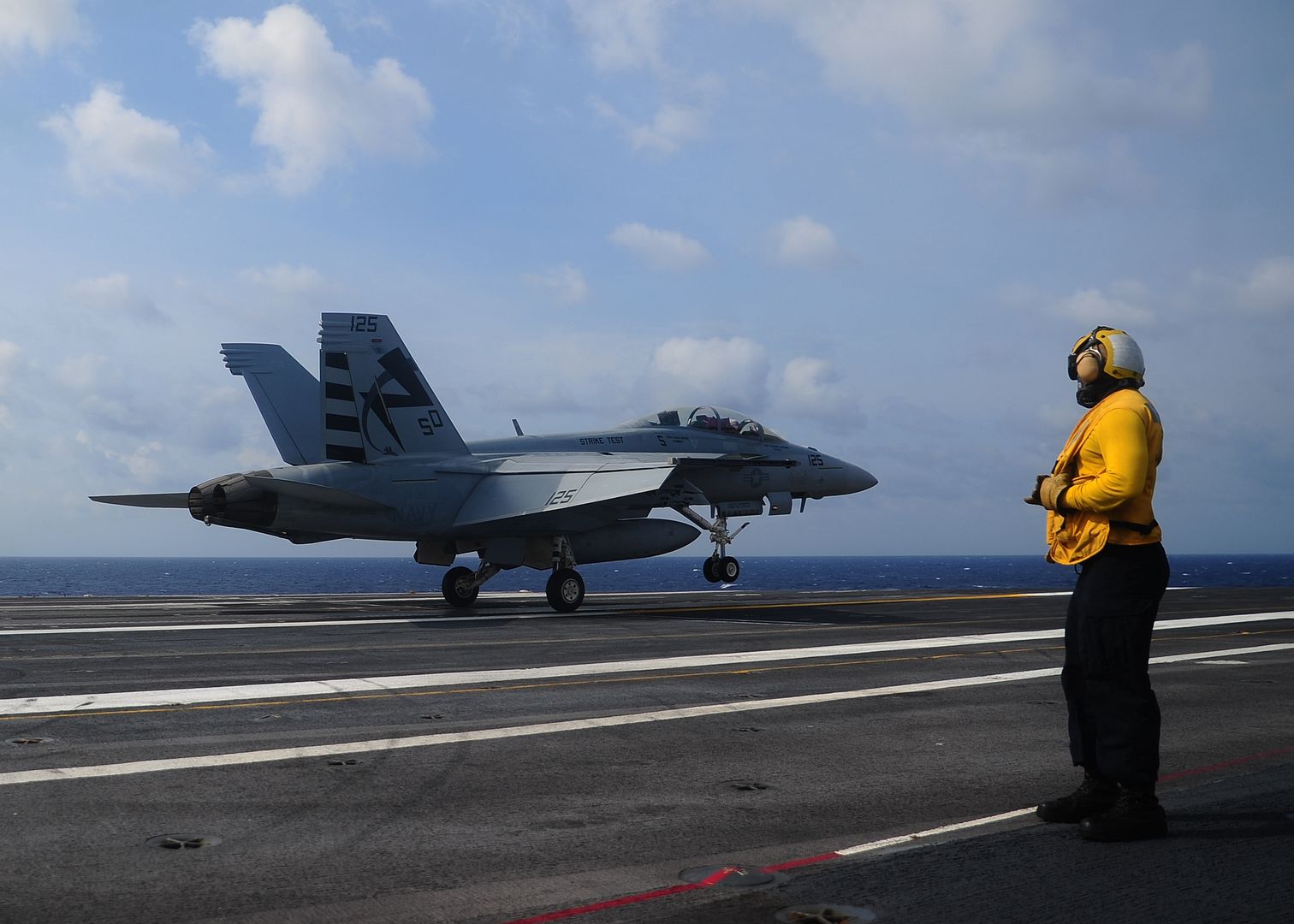
-
9 years ago
 Level 1Thai Airways International's first A350 XWB to begin ground and flight tests
Level 1Thai Airways International's first A350 XWB to begin ground and flight tests
Thai Airways International's (THAI) first A350 XWB has rolled out from cabin furnishing and engine installation process at the Airbus final assembly line in Toulouse, France. The A350-900 aircraft will now proceed for further ground and flight testing, and be delivered later this year to THAI.
The A350 XWB family will bring efficiency and comfort in the long-range market, as well as cater to the needs of Asia-Pacific airlines, Airbus claimed. The A350 XWB is the latest generation airliner and the newest member of Airbus' wide-body product family.
It features the latest aerodynamic design, carbon fibre fuselage and wings, in addition to fuel-efficient Rolls-Royce Trent XWB engines. The inclusion of latest technologies result in operational efficiency, lower maintenance costs, and a 25% reduction in fuel burn and emissions.
Last month, Ethiopian Airlines took delivery of its first Airbus A350-900, becoming the first African operator of the A350 XWB aircraft. -
9 years ago
 Level 1PPG secures FAA approval to repaid cockpit windows for A320 aircraft family
Level 1PPG secures FAA approval to repaid cockpit windows for A320 aircraft family
PPG has secured approval of the US Federal Aviation Administration (FAA) to repair sliding and aft fixed cockpit windows for Airbus A320 aircraft family, leading to cost savings for airlines and other aircraft operators. This approval enables PPG to repair glass window assemblies produced by any manufacturer for Airbus A318, A319, A320 and A321 airplanes, as well as the recently launched new engine option (NEO) family.
According to the approved procedures, PPG will replace the glass panels, and reuse and refurbish frame retainers from suppliers. PPG global director for commercial aircraft transparencies Arthur Scott said: "Operators rely on PPG for its expertise in transparency repair services to reduce their costs.
"Being able to offer FAA-approved repairs for the cockpit side windows on these Airbus airplanes gives operators a new option for window maintenance." PPG performs repairs at its facility in Huntsville, Alabama. This facility has an FAA-licensed repair station, and manufactures original equipment and replacement parts.
Cockpit side windows for the Airbus A320 family are being designed with glass panels and retainers as complete assemblies. In addition to the FAA-approved repair service, PPG offers replacement window assemblies and panels. -
 Main AdminMEDITERRANEAN SEA (July 4, 2016) - Two MH-60R Sea Hawk helicopters assigned to the Swamp Foxes of Helicopter Maritime Strike Squadron (HSM) 74 fly above the flight deck of the aircraft carrier USS Dwight D. Eisenhower (CVN 69) (Ike) during HSM 74's change of command ceremony between Cmdr. Teague Laguens and Cmdr. Dan Testa. Ike is deployed in support of Operation Inherent Resolve, maritime security operations and theater security operation efforts in the U.S. 6th Fleet area of operations. (U.S. Navy photo by Mass Communication Specialist 3rd Class Anderson W. Branch/Released)
Main AdminMEDITERRANEAN SEA (July 4, 2016) - Two MH-60R Sea Hawk helicopters assigned to the Swamp Foxes of Helicopter Maritime Strike Squadron (HSM) 74 fly above the flight deck of the aircraft carrier USS Dwight D. Eisenhower (CVN 69) (Ike) during HSM 74's change of command ceremony between Cmdr. Teague Laguens and Cmdr. Dan Testa. Ike is deployed in support of Operation Inherent Resolve, maritime security operations and theater security operation efforts in the U.S. 6th Fleet area of operations. (U.S. Navy photo by Mass Communication Specialist 3rd Class Anderson W. Branch/Released)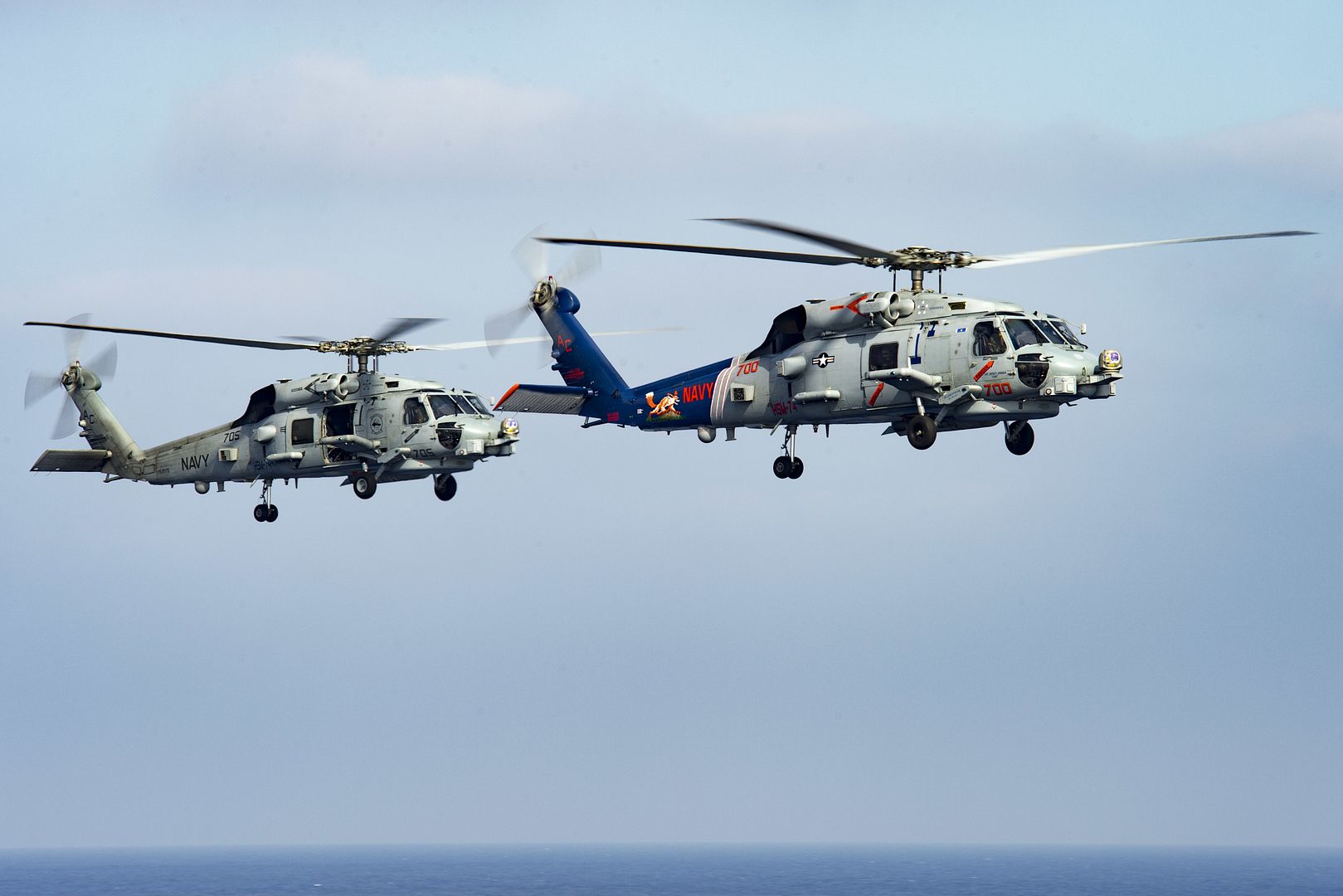
-
 Main AdminA CP-140 Aurora aircraft and crew from 415 Long Range Patrol Squadron, located at 14 Wing Greenwood, Nova Scotia, are participating in the Royal International Air Tattoo July 7-9, 2016, in Fairford, U.K.
Main AdminA CP-140 Aurora aircraft and crew from 415 Long Range Patrol Squadron, located at 14 Wing Greenwood, Nova Scotia, are participating in the Royal International Air Tattoo July 7-9, 2016, in Fairford, U.K.
?We are very pleased to be participating in the Royal International Air Tattoo with the CP-
140M Aurora, one of the world's leading surveillance and long-range patrol aircraft,? said Colonel Pat Thauberger, the commander of 14 Wing. ?With Canada's vast maritime and Arctic domains to protect, including the wide variety of missions that we do both domestically and internationally, the Aurora's top notch crew and modernized sensors deliver exceptional battle-space information in near real-time, enabling Commanders to engage decisively in any mission.
?They will do Canada proud in demonstrating this capability amongst our allies and partners.?
The Royal International Air Tattoo occurs annually in Fairford and reunites close to 50 Air Forces from around the world, including their chiefs or their delegates.
The Royal Canadian Air Force, including 14 Wing, routinely conducts operations and exercises with the British Armed Forces as part of a long-standing and mutually beneficial defence partnership.
The CP-140M Aurora participating in the Royal International Air Tattoo is a Block III (modernized) aircraft, crewed with 14 RCAF and Royal Air Force personnel (on exchange with the RCAF), who train and operate together while stationed at 415 Squadron. The Aurora, acquired for the maritime patrol and anti-submarine warfare role, functions primarily as a command, control, communication, computer, intelligence, surveillance, and reconnaissance (C4ISR) platform for domestic and international operations. The aircraft enables the Government of Canada to project deterrence, to control illegal or hostile activity anywhere in Canada's remote regions and has been playing an increasing role as an overland Intelligence, Surveillance, and Reconnaissance platform for security operations overseas.
Post a reply
- Go to Previous topic
- Go to Next topic
- Go to Welcome
- Go to Introduce Yourself
- Go to General Discussion
- Go to Screenshots, Images and Videos
- Go to Off topic
- Go to Works in Progress
- Go to Skinning Tips / Tutorials
- Go to Skin Requests
- Go to IJAAF Library
- Go to Luftwaffe Library
- Go to RAF Library
- Go to USAAF / USN Library
- Go to Misc Library
- Go to The Ops Room
- Go to Made in Germany
- Go to Campaigns and Missions
- Go to Works in Progress
- Go to Juri's Air-Raid Shelter
- Go to Campaigns and Missions
- Go to Works in Progress
- Go to Skinpacks
- Go to External Projects Discussion
- Go to Books & Resources
